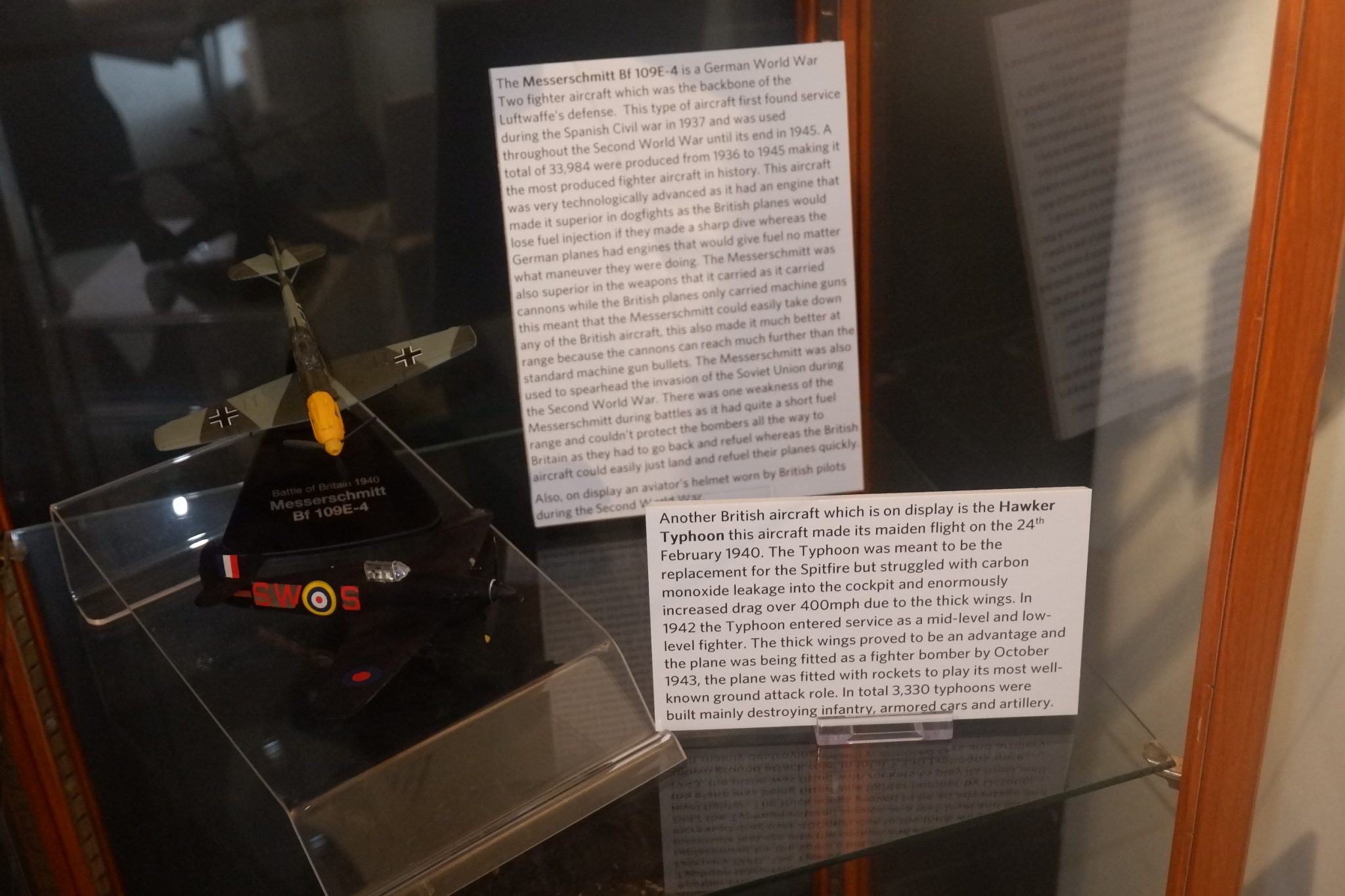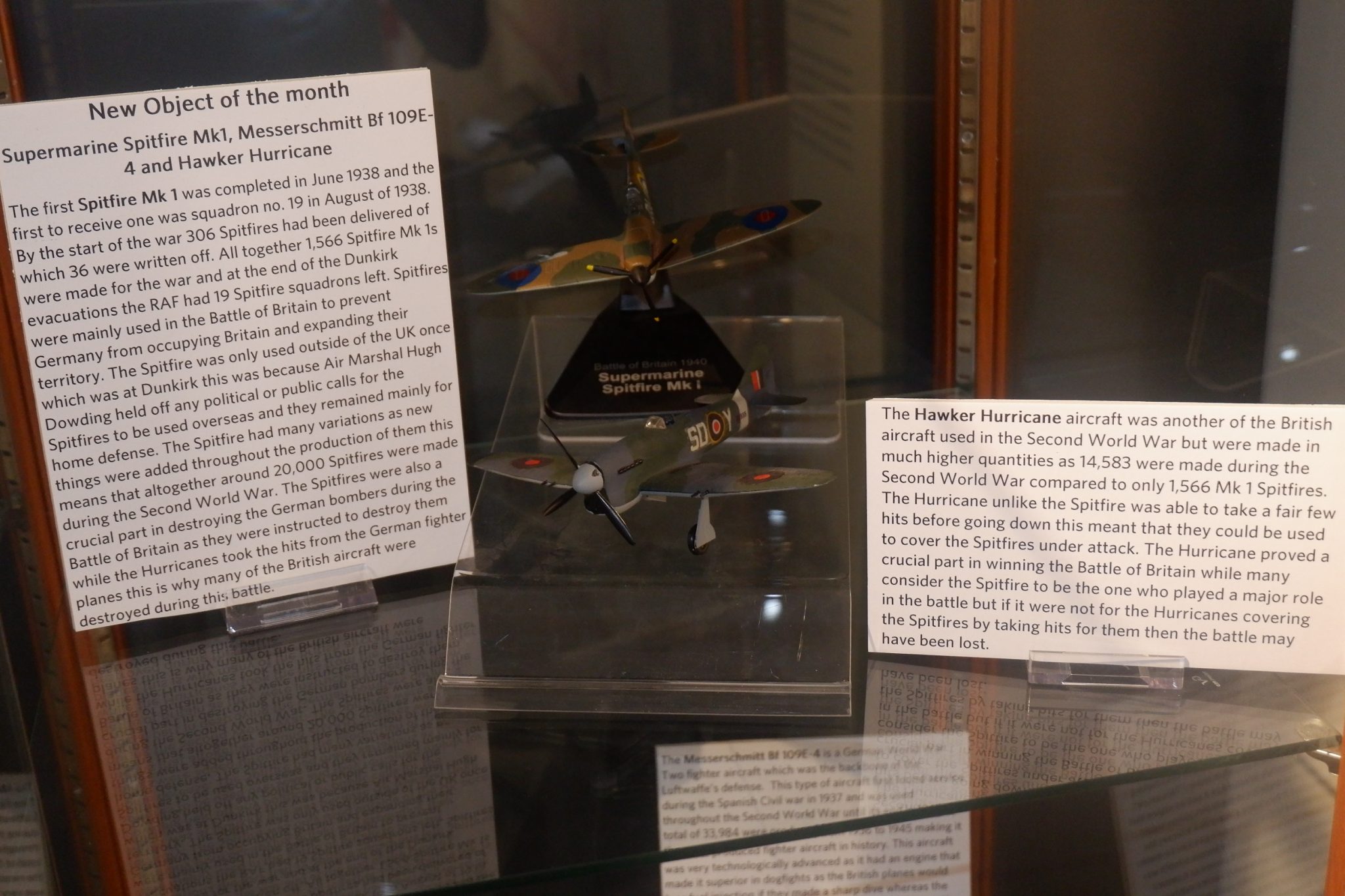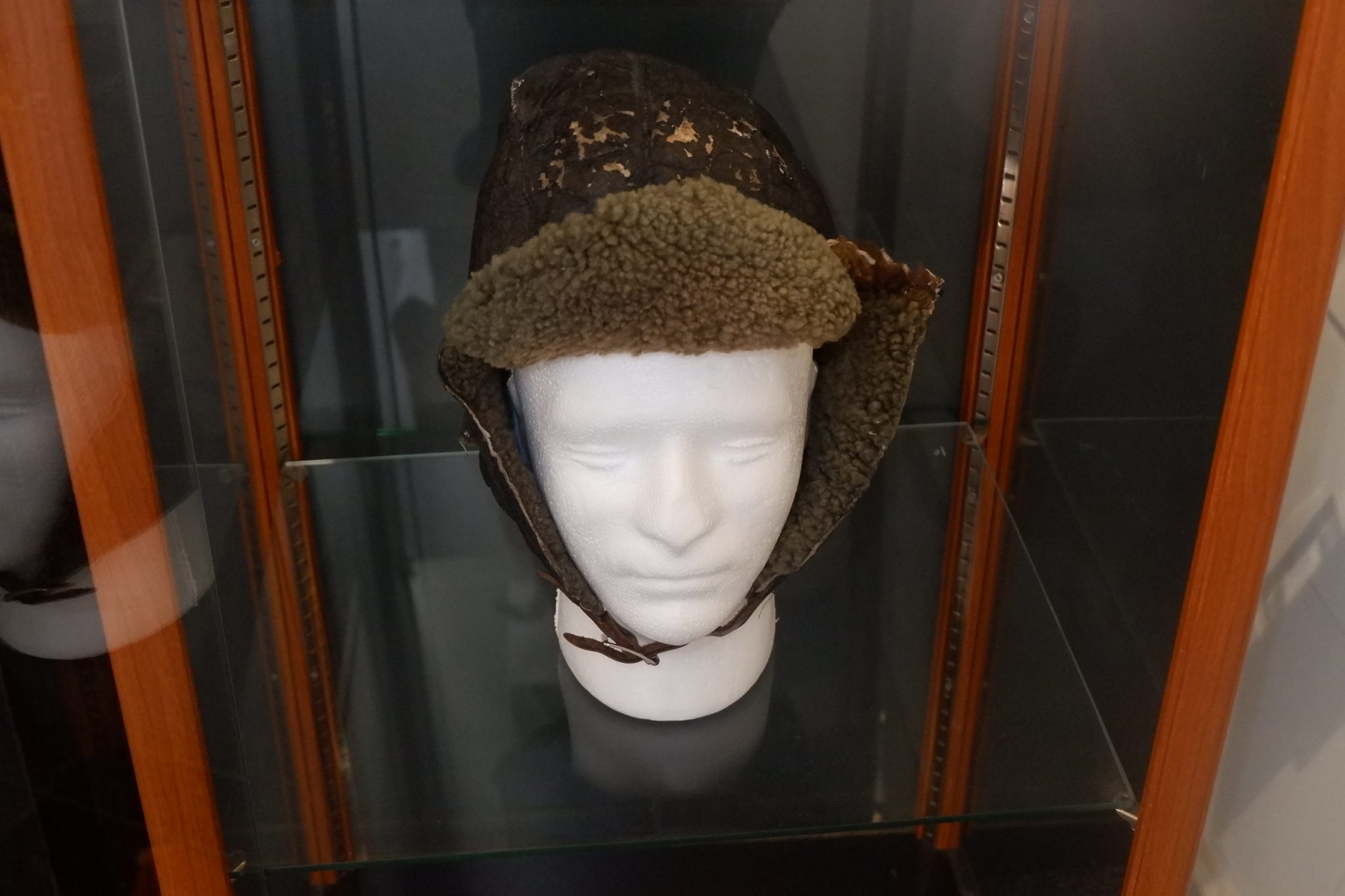
New Object of the month
Supermarine Spitfire Mk1, Messerschmitt Bf 109E-4, Hawker Hurricane and Hawker Typhoon

The first Spitfire Mk 1 was completed in June 1938 and the first to receive one was squadron no. 19 in August of 1938. By the start of the war 306 Spitfires had been delivered of which 36 were written off. All together 1,566 Spitfire Mk 1s were made for the war and at the end of the Dunkirk evacuations the RAF had 19 Spitfire squadrons left. Spitfires were mainly used in the Battle of Britain to prevent Germany from occupying Britain and expanding their territory. The Spitfire was only used outside of the UK once which was at Dunkirk this was because Air Marshal Hugh Dowding held off any political or public calls for the Spitfires to be used overseas and they remained mainly for home defense. The Spitfire had many variations as new things were added throughout the production of them this means that altogether around 20,000 Spitfires were made during the Second World War. The Spitfires were also a crucial part in destroying the German bombers during the Battle of Britain as they were instructed to destroy them while the Hurricanes took the hits from the German fighter planes this is why many of the British aircraft were destroyed during this battle.
The Hawker Hurricane aircraft was another of the British aircraft used in the Second World War but were made in much higher quantities as 14,583 were made during the Second World War compared to only 1,566 Mk 1 Spitfires. The Hurricane unlike the Spitfire was able to take a fair few hits before going down this meant that they could be used to cover the Spitfires under attack. The Hurricane proved a crucial part in winning the Battle of Britain while many consider the Spitfire to be the one who played a major role in the battle but if it were not for the Hurricanes covering the Spitfires by taking hits for them then the battle may have been lost.

Another British aircraft which is on display is the Hawker Typhoon this aircraft made its maiden flight on the 24th February 1940. The Typhoon was meant to be the replacement for the Spitfire but struggled with carbon monoxide leakage into the cockpit and enormously increased drag over 400mph due to the thick wings. In 1942 the Typhoon entered service as a mid-level and low-level fighter. The thick wings proved to be an advantage and the plane was being fitted as a fighter bomber by October 1943, the plane was fitted with rockets to play its most well-known ground attack role. In total 3,330 typhoons were built mainly destroying infantry, armored cars and artillery.
The Messerschmitt Bf 109E-4 is a German World War Two fighter aircraft which was the backbone of the Luftwaffe’s defense. This type of aircraft first found service during the Spanish Civil war in 1937 and was used throughout the Second World War until its end in 1945. A total of 33,984 were produced from 1936 to 1945 making it the most produced fighter aircraft in history. This aircraft was very technologically advanced as it had an engine that made it superior in dogfights as the British planes would lose fuel injection if they made a sharp dive whereas the German planes had engines that would give fuel no matter what maneuver they were doing. The Messerschmitt was also superior in the weapons that it carried as it carried cannons while the British planes only carried machine guns this meant that the Messerschmitt could easily take down any of the British aircraft, this also made it much better at range because the cannons can reach much further than the standard machine gun bullets. The Messerschmitt was also used to spearhead the invasion of the Soviet Union during the Second World War. There was one weakness of the Messerschmitt during battles as it had quite a short fuel range and couldn’t protect the bombers all the way to Britain as they had to go back and refuel whereas the British aircraft could easily just land and refuel their planes quickly.


